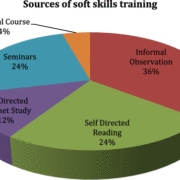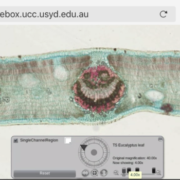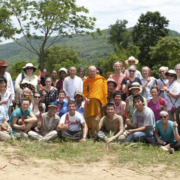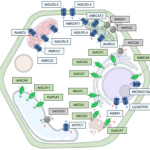Letter to the editor: Creating supportive environments in academia for Black scientists to thrive
This letter by Kevin Cox, Kiona Elliott, and Taylor Harris is the 4th in our series on diversity, equity, and inclusion in STEM disciplines. Read the editorial call for letters here: Sowing the seeds of equity and diversity in academia and STEM disciplines.
Cox KL Jr, Elliott KR, Harris TM (2021) Creating supportive environments in academia for Black scientists to thrive. Plant Cell. First published May 7,2021. doi: 10.1093/plcell/koab125
Plants are resilient organisms that manage to grow despite the dangers of diseases and stresses. One reason they are able to do so is their complex signaling pathways (Lamers et al., 2020). However, even their genetic compositions will not be enough if plants are not grown in an optimal environment. Additionally, there is no “universal environment”, as each plant species has its own optimal environment that allows them to grow and thrive. This is something well-known in plant biology. But something that is not as well-known is how this principle also applies to people. For people to thrive and realize their full potential, they also need to be in a fostering environment/culture that supports them and allows them to grow (Montgomery, 2020b; Montgomery, 2021). Unfortunately, this very often is not the case with Black students/scientists studying in the plant sciences. Black students/scientists are not only underrepresented in this area of study, but the lack of an appropriate support system in universities/institutions discourages them from remaining in the sciences since they may feel that “they do not belong” (Hinton et al., 2020). Thus, this “leaky STEM pipeline” appears to be a result of the lack of diversity inclusion (Asai, 2020). While events such as #BlackBotantistsWeek and #ShutDownSTEM have amplified the voices of Black plant scientists and helped people of non-color to educate themselves on the awareness of racial discrimination in STEM (Mallenbaum, 2020), more actions need to be implemented by universities/institutions to create supportive environments to keep Black scientists in STEM fields. Here we discuss some of the problematic areas with current environments at academic institutions and provide actions that can be implemented to improve academic cultures across different levels of early career stages; undergraduate, graduate school, and postdoctoral tenure. We share some of our personal experiences as early career Black scientists and highlight some of the positive experiences that have benefited us in our academic journeys. Through this letter, we will highlight the importance of creating communities to prevent social isolation, promote active mentoring, and develop nurturing environments for Black scientists to thrive in academia and to develop successful independent careers.
Undergraduate perspective
(Written by Taylor Harris)
Undergraduate years are an important time for student exposure to opportunities in science. The experience students gain from intense courses and research can make or break their interests and will shape their outlook on their future. While students of many different backgrounds are equally likely to pursue a major in STEM degrees, Black and Latinx students are more likely to leave STEM majors compared to their peers (Riegle-Crumb et al., 2019). Reasons for this difference may involve, but are not limited to, availability of resources and the difficulty of establishing a sense of identity and belonging within science as a person of color, considering the lack of representation. Thus, creating environments that support student-belonging and retention in science is crucial at the undergraduate level.
Having attended a Historically Black College or University (HBCU) as an undergraduate, I developed an intense curiosity for science in a welcoming environment that helped me build identity and confidence to pursue a STEM career. Though HBCUs make up only 3% of the country’s colleges and universities, they contribute to 16% of Black STEM degrees and 25% of Black science and engineering doctorate recipients graduated from HBCUs (National Center for Science and Engineering Statistics, 2019; National Science Board, 2019). As an undergraduate, I had mentors who created a safe, embracing culture for my professional development; in these safe spaces, I never needed to minimize who I was and could bring my full-self to endeavors in science. I also benefited from having access to peers and scientists from diverse backgrounds which helped me envision myself pursuing STEM. In addition to learning in a welcoming and embracing culture, I participated in undergraduate STEM training programs designed to support and retain students from underrepresented backgrounds in science such as the NIH Maximizing Access to Research Careers Undergraduate Student Training in Academic Research program and the NSF Tennessee Louis Stokes Alliance for Minority Participation program. Other than being fully submerged in Black culture, there are some simple, intimate, and practical approaches to fostering inclusive environments that can be achieved in other spaces and within the plant science community.
Institutions should consider shifting their learning cultures to one that encourages students to learn and engage with others about science fearlessly. This might involve being creative and rethinking how we typically approach teaching and practicing science. This has the potential to build students’ confidence and allows them better see how they can fit within and belong in science, rather than trying to minimize who they are in an effort to fit into science. For example, if you have new students of color join your lab, be open to welcoming unique/alternative ways for them to give presentations at lab meetings and/or encourage the students’ own ideas that might help them (and others) draw better understanding on specific topics. Besides having lab meetings only in the format of a formal seminar, other formats that encourage individual participation could be explored. This might include discussing publications with interesting findings or new methods that can be used for their experiments, having small group discussion on research progress/troubleshooting, or any other alternative method that better supports student needs. Secondly, institutions should consider programs that support, train, and provide opportunities for students of color to develop their skills. These can be internally designed and orchestrated programs or externally funded programs. With programs centered on supporting students of color, students can be exposed to different disciplines, including plant science, and be provided unique learning and training opportunities to both encourage and increase their participation. Lastly, it would serve universities well to build a pipeline that connects scientists and trainees of color in STEM to undergraduates. For example, if an institution has a STEM training program in place, there can be opportunities for scientists who are further along in their career to engage with students and serve as role models. This too can help students visualize themselves in the scientific space long-term and help create a sense of belonging in science.
Graduate school perspective
(Written by Kiona Elliott)
Graduate school is a time dedicated to expanding general knowledge in one’s field and further developing technical and professional skills. While being a graduate student is a wonderful and exploratory experience, it can also be a difficult one. A survey of over two thousand graduate students found that “students were more than six times as likely to report experiences of depression and anxiety compared to the general population” (Evans et al., 2018). The hardships of graduate school are often further amplified for Black graduate students due to the unique barriers they may face. These barriers can include experiences such as racial and cultural aggressions and isolation due to lack of diversity and inclusion in academic institutions (Blanchard, 2018). Academic leaders often recognize and accept the need for resources, such as mental health counselors, for student success, well-being, and retention in graduate education. Similarly, it is critical that we recognize the needs of Black graduate students and invest in resources that contribute to their advancement.
When I began my search for graduate schools, I looked not only for interesting research opportunities, but for programs that had tangible support systems in place for underrepresented minorities (URM) in STEM. The support structures I sought included: Diversity, Inclusion, and Equity (DEI) centers, URM training programs, and associations dedicated to celebrating student identities. DEI centers can help institutions promote and increase diversity by analyzing the needs related to DEI within the institution, and by developing/executing strategic plans that address them. For example, DEI centers can cultivate training sessions that equip faculty to identify and address microaggressions and train them to provide culturally sensitive mentorship for students. It is important to note that DEI centers should be adequately funded, staffed, and assessed in order for them to advance beyond performative allyship and to ensure they provide meaningful support for Black graduate students and other trainees (U.S. Department of Education, 2016). Additionally, training programs specifically designed to help URM students can provide meaningful advising, mentorship, and professional development opportunities. One example of such a training program is the Initiative to Maximize Student Development (IMSD) program. IMSD programs are NIH funded, can be found at various institutions across the nation, and strive to increase the number of scientists earning a Ph.D. who identify as URM (National Institute of General Medical Sciences, 2021). Lastly, student-led associations (e.g. Black graduate student associations) that celebrate student cultural identities are valuable because they provide community for students to connect with others who share similar backgrounds and experiences. Furthermore, such associations can serve to increase institutional awareness of the needs of students by serving as a unified platform for students to communicate concerns to leadership. These support structures will not only be beneficial for Black students, they will also provide important resources for non-Black students/faculty to learn about the needs and views of their Black colleagues and a community to interact and connect with.
As a current Ph.D. candidate, I have benefited from the previously described resources and they have aided in my training by providing me with tools, mentorship, and community. However, this is sadly not true for all Black scientists pursuing graduate education. In order for institutions to create an environment that supports and retains Black graduate scientists the first step is to listen to their needs, and the second is to establish well-designed programs that nurture their talents.
Postdoctoral fellow perspective
(Written by Kevin Cox)
Ph.D. students that graduate and transition into postdoctoral positions enter a critical phase in their early careers. In this period, postdoctoral scientists take their specialized knowledge and experience to fully craft themselves as independent researchers. However, since generally there is a lack of cohorts, organizations, or offices tailored specifically for post-docs, it is easy to fall into a sense of isolation. This feeling is greatly enhanced for Black postdoctoral trainees, as they are very likely to be the only Black post-doc in their mentor’s lab or even their department (National Science Foundation, 2019). After completing graduate school, I feared that I would succumb to this isolation upon starting my postdoctoral training and that my productivity would be affected. While I have been fortunate and thankful to be in a welcoming lab with an active postdoctoral mentor and an institution that has a supportive environment that gives me a sense of “belonging” and allows me to develop my career, I am well aware that this experience is not common. This needs to change if we’re going to have more Black postdoctoral fellows become faculty members or independent researchers in industry.
Active mentoring could play a significant role in increasing the number of Black postdoctoral associates. Postdoctoral mentors need to have more of a “groundskeeping” mentality and less “gatekeeping” (Montgomery, 2020a). One activity to which this applies is recruiting. Mentors with a gatekeeping recruitment approach, for example, hire candidates that meet their requirements solely or principally based on the candidate’s publication record. An example of a groundskeeping recruitment approach would involve mentors assisting interested candidates in securing funding, such as fellowships, to provide them with an opportunity to have a postdoctoral tenure in their lab. Mentors being intentional in assisting Black scientists to find post-doctoral funding is key, as it will encourage them to remain in the sciences to achieve their career goals. Another stage when the mentor can apply more groundskeeping actions is during the early training/development of their mentees. Because of the diverse programs in graduate school, postdoctoral trainees may have deficiencies in some fields of science (i.e., bioinformatics, genetics, etc.) that are needed for their projects. A typical gatekeeping mentality would be to just wait for the trainee to solve this problem on their own (“sink or swim”). Instead, mentors can help their trainees address their deficiencies by suggesting relevant workshops to attend or collaborators to work with. Giving trainees these resources will allow them to think critically without limitations and to remain motivated on their projects. To summarize, active mentors with groundskeeping mentalities can help to remove a number of obstacles and roadblocks for Black postdoctoral fellows so they can have fruitful postdoctoral tenures.
Institutions can also change their environments to make it more welcoming for Black post-docs. One approach is to ensure that there is a type of postdoctoral association in each department/institution. This allows new postdoctoral trainees to interact immediately with their colleagues and have a community they can turn to for advice on experiments, campus/town life, etc. Another change that institutions can implement is creating and funding annual training grants that are geared specifically for individuals that are racially underrepresented in STEM (Hinton et al., 2020). Such training grants can provide key professional training, from scientific and grant writing to practicing for faculty interviews, which helps prepare early career investigators for their next career stage. Additionally, these training grants can encourage postdoctoral associates to form committees to oversee and advise their research. Changes in mentorship and infrastructure at research institutions will be critical to create a supportive environment for Black postdoctoral associates.
Conclusions
It is clear that the current environments in academia are not working for many Black scientists in plant biology as well as other STEM fields. As described in this letter, recruiting more Black scientists into these early career stages is only part of the solution; the environment needs to be improved as well. Additionally, it is critical for institutions to actively engage in conversations with their Black students and scientists to understand how they are interacting with their home institutions and to identify the problematic areas in their academic environments. As a collective, we reflected on our experiences and recognized common themes both in the resources that have aided us in our career journeys and the resources we wish existed. To summarize, these themes are:
- Community building: Creating a social network to combat isolation and provide trainees with a sense of belonging and support.
- Mentors and leadership: Creating cognizant faculty and staff members through consistent training and awareness of trainee concerns.
- Nurturing environments: Creating opportunities for trainee professional development through access to workshops, seminars, fellowships, and training programs.
If institutions actively incorporate these themes into structures, we can create fostering and inclusive environments that welcome, support, and embrace Black scientists. Only then can more Black scientists be retained in the plant sciences, allowing them to grow and thrive into successful careers.
Acknowledgments
We would like to thank Elizabeth Haswell for critical reading of the letter and providing constructive comments. We would also like to thank our mentors and colleagues who have been supportive in our scientific careers. K.L.C. is funded by a Howard Hughes Medical Institute Hanna Gray Fellowship, K.R.E. is funded by a National Science Foundation Graduate Research Fellowship (DGE-1745038), and T.M.H. is funded by a Washington University in St. Louis Chancellor’s Graduate Fellowship.
Kevin L. Cox Jr.1,2,**, Kiona R. Elliott1,3,**, Taylor M. Harris1,3,**
1Donald Danforth Plant Science Center, St. Louis, MO 63132
2Howard Hughes Medical Institute, Chevy Chase, MD 20815
3Division of Biology and Biomedical Sciences, Washington University in St. Louis, St. Louis, MO 63110
**These authors contributed equally to the work.
REFERENCES
Asai, D.J. (2020). Race Matters. Cell 181: 754–757.
Blanchard, S.J. (2018). Black Graduate Students’ Experiences of Stress and Coping. Doctoral dissertation, Western Michigan Univ. https://scholarworks.wmich.edu/dissertations/3315/
Evans, T.M., Bira, L., Gastelum, J.B., Weiss, L.T., and Vanderford, N.L. (2018). Evidence for a mental health crisis in graduate education. Nat. Biotechnol. 36: 282–284.
Hinton, A.O., Jr et al. (2020). Patching the Leaks: Revitalizing and Reimagining the STEM Pipeline. Cell 183: 568–575.
Lamers, J., van der Meer, T., and Testerink, C. (2020). How Plants Sense and Respond to Stressful Environments. Plant Physiol. 182: 1624–1635.
Mallenbaum, C. (2020). BlackBirdersWeek,# BlackInNeuro: Black scientists, physicians are using hashtags to uplift. USA Today. https://www.usatoday. com/story/life/2020/08/04/blackinneuro-blackinchem-can-hashtags-help-black-scientists-build-community-spotlight-excellence/5541431002.
Montgomery, B.L. (2020a). Academic Leadership: Gatekeeping or Groundskeeping? J. Values-Based Leadership 13: 16.
Montgomery, B.L. (2020b). Planting Equity: Using What We Know to Cultivate Growth as a Plant Biology Community. Plant Cell 32: 3372–3375.
Montgomery, B.L. (2021). Lessons from Plants. Harvard University Press, Cambridge, Massachusetts.
National Center for Science and Engineering Statistics (2019). Bachelor’s degrees awarded by all institutions and by HBCUs to black U.S. citizens and permanent residents, by field: 2006–16. https://ncses.nsf.gov/pubs/nsf19304/data/
National Institute for General Medical Sciences (2021). Initiative for maximizing student development (IMSD) program (T32). https://www.nigms.nih.gov/training/IMSD.
National Science Board (2019). Science & Engineering Indicators Report. https://www.nsf.gov/nsb/publications/index.jsp
National Science Foundation (2019). Survey of Graduate Students and Postdoctorates in Science and Engineering – Public Use Data Files. https://www.nsf.gov/statistics/srvygradpostdoc/pub_data.cfm
Riegle-Crumb, C., King, B., Irizarry, Y. (2019). Does STEM Stand Out? Examining Racial/Ethnic Gaps in Persistence Across Postsecondary Fields. Educational Researcher 48:133-144.
U.S. Department of Education (2016). Advancing diversity and inclusion in higher education. https://www2.ed.gov/rschstat/research/pubs/advancing-diversity-inclusion.pdf








